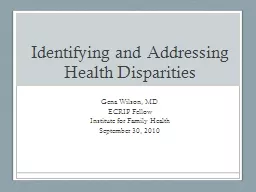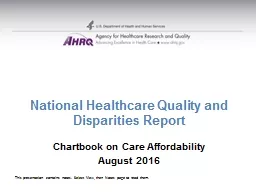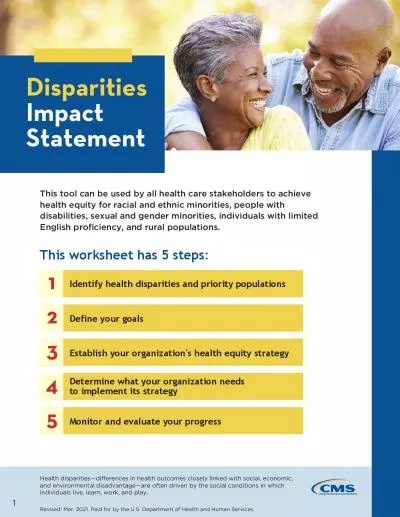PPT-Identifying and Addressing Health Disparities
Author : pamella-moone | Published Date : 2016-03-24
Gena Wilson MD ECRIP Fellow Institute for Family Health September 30 2010 Source US Census Bureau Population Division National Healthcare Disparities Report 2009
Presentation Embed Code
Download Presentation
Download Presentation The PPT/PDF document "Identifying and Addressing Health Dispar..." is the property of its rightful owner. Permission is granted to download and print the materials on this website for personal, non-commercial use only, and to display it on your personal computer provided you do not modify the materials and that you retain all copyright notices contained in the materials. By downloading content from our website, you accept the terms of this agreement.
Identifying and Addressing Health Disparities: Transcript
Download Rules Of Document
"Identifying and Addressing Health Disparities"The content belongs to its owner. You may download and print it for personal use, without modification, and keep all copyright notices. By downloading, you agree to these terms.
Related Documents














